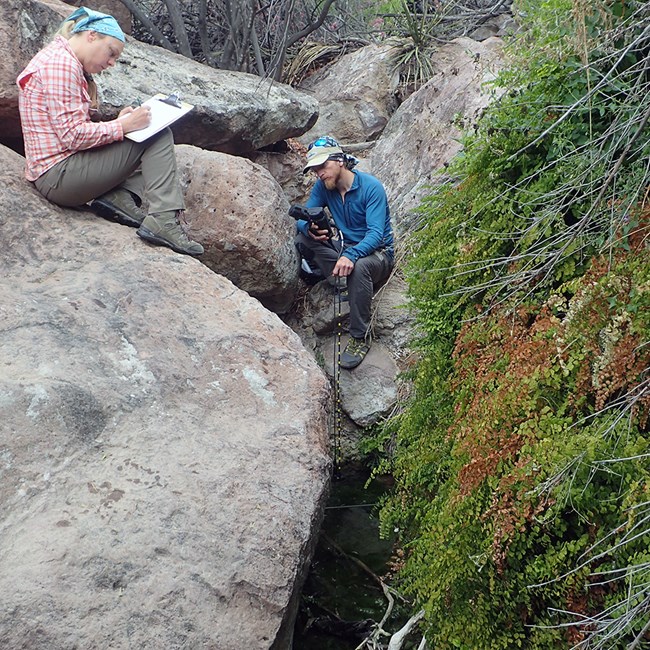
NPS Photo
Overview
With the exception of water provided by snow and rain, the majority of water for wildlife and most humans over the vast expanse of the desert southwest comes from groundwater, springs, seeps, and tinajas. Springs are reliable perennial sources of water where groundwater reaches Earth's surface, seeps emit water from underground that does not always reach the surface, and tinajas are surface waters in bedrock depressions. Tinajas are fed by springs and/or precipitation. Spring, seep, and tinaja ecosystems are small, relatively rare “biodiversity hot spots” in arid lands because they support a substantial number of aquatic, riparian, and terrestrial species. Many of these plants and animals depend on the aquatic ecosystem and are unique to that location.
Understanding patterns in the amount and quality of water in springs, seeps, tinajas will help us to gauge the overall status of water resources in our parks. These waters are important to park managers because they are among the most important and limited habitats for focal and threatened plant and animal species. In some cases, identifying the condition of springs and seeps is important for human health and safety. Knowing whether surface water is available at a given site is important to park visitors planning trips into the backcountry.

NPS Photo
What We Monitor
- Water depth, wetted extent, number of days spring is dry, and natural and human disturbance: measured at all springs, seeps, and tinajas
- Flow rate, water temperature, dissolved oxygen, conductivity, and pH: measured at select springs, seeps, and tinajas
- Riparian plant species richness, percent vegetation cover for common perennial plants, and percent frequency of uncommon annual and perennial plants: measured at select springs, seeps, and tinajas
Where We Monitor
- Amistad National Recreation Area
- Big Bend National Park
- Carlsbad Caverns National Park
- Guadalupe Mountains National Park
- White Sands National Park
Publications
Read more about our springs, seeps, and tinajas work in the protocol (monitoring procedures) and monitoring reports below.Source: NPS DataStore Saved Search 3556. To search for additional information, visit the NPS DataStore.
Source: NPS DataStore Saved Search 3656. To search for additional information, visit the NPS DataStore.
Last updated: December 14, 2020
